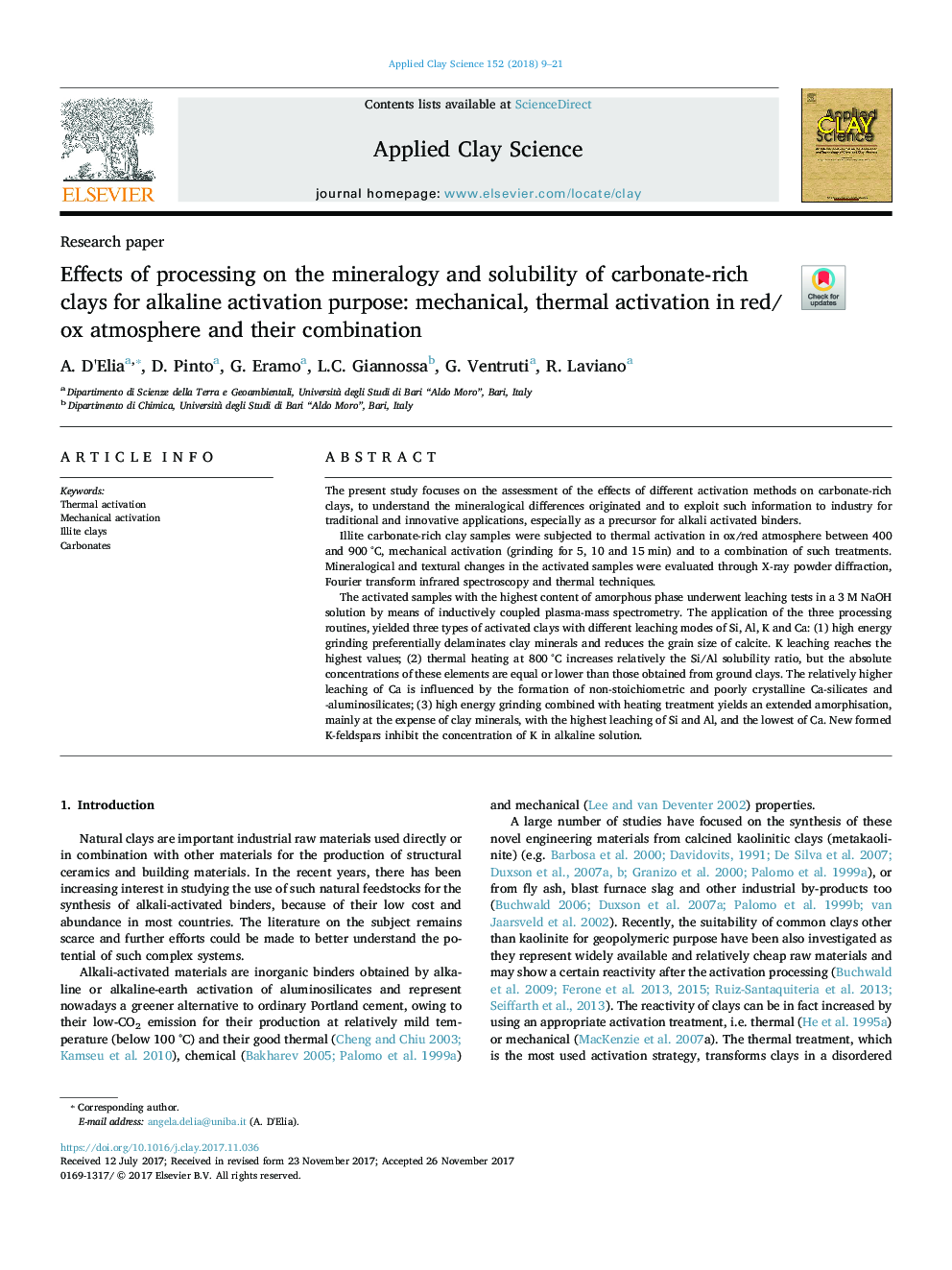| Article ID | Journal | Published Year | Pages | File Type |
|---|---|---|---|---|
| 8046274 | Applied Clay Science | 2018 | 13 Pages |
Abstract
The activated samples with the highest content of amorphous phase underwent leaching tests in a 3 M NaOH solution by means of inductively coupled plasma-mass spectrometry. The application of the three processing routines, yielded three types of activated clays with different leaching modes of Si, Al, K and Ca: (1) high energy grinding preferentially delaminates clay minerals and reduces the grain size of calcite. K leaching reaches the highest values; (2) thermal heating at 800 °C increases relatively the Si/Al solubility ratio, but the absolute concentrations of these elements are equal or lower than those obtained from ground clays. The relatively higher leaching of Ca is influenced by the formation of non-stoichiometric and poorly crystalline Ca-silicates and -aluminosilicates; (3) high energy grinding combined with heating treatment yields an extended amorphisation, mainly at the expense of clay minerals, with the highest leaching of Si and Al, and the lowest of Ca. New formed K-feldspars inhibit the concentration of K in alkaline solution.
Related Topics
Physical Sciences and Engineering
Earth and Planetary Sciences
Geochemistry and Petrology
Authors
A. D'Elia, D. Pinto, G. Eramo, L.C. Giannossa, G. Ventruti, R. Laviano,
